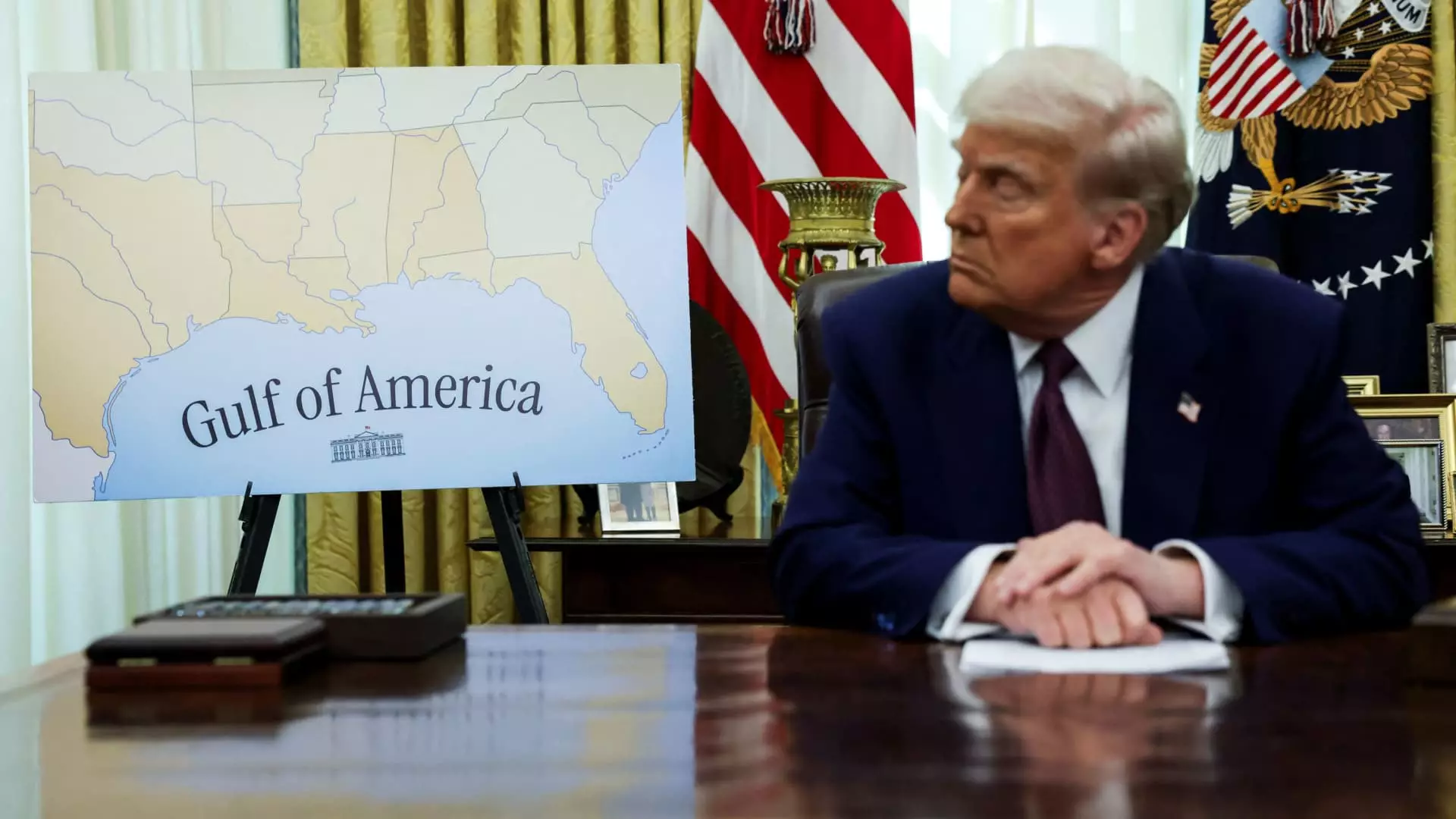The economic landscape is currently defined by uncertainty, and the imposition of tariffs by President Donald Trump on various imported goods has intensified this climate. These trade policies don’t merely affect specific sectors, but ripple through the entire economy, prompting apprehension among investors and stakeholders alike. Trump’s strategy, characterized by its aggressive approach toward countries like China, Canada, Mexico, and potentially Europe, raises essential questions about the long-term viability of U.S. companies that rely on international trade.
President Trump’s decision to enact a 10% tariff on all Chinese goods shortly after assuming office represents a critical pivot in U.S.-China relations. This bold maneuver ignited retaliation from China, which slapped additional tariffs of up to 15% on key U.S. exports such as coal and liquefied natural gas. The ramifications of such a trade war extend beyond mere statistics; they have the potential to disrupt supply chains, inflate costs for manufacturers, and, crucially, erode margins for many companies dependent on these imports.
Investors are naturally cautious, and the volatility stemming from the tariffs has been well-documented. As billionaire investor Steve Cohen highlighted, tariffs essentially function as a tax that can undermine overall economic growth. Cohen suggests we may be teetering on the brink of a significant market correction, a sentiment that reflects broader fears about the sustainability of such tariff-driven policies. While short-term gains may have been realized by some, the overarching implications present a troubling outlook for future business operations and profitability.
The tariff strategy adopted by the Trump administration does not stop at China. Canada and Mexico have also found themselves entangled in a web of tariffs, with a 25% levy initially proposed on goods imported from these countries. Although this particular increase was paused for a month, the uncertainty surrounding trade relations has placed additional stress on these economies. American businesses that depend heavily on exports to neighboring countries now face uncertain futures as political negotiations unfold.
Many analysts argue that the potential fallout from such tariffs could be far-reaching. A case in point is American Airlines, whose revenue exposure to Latin America stands at around 14%. This figure invites questions about potential sales declines if the cost of leisure travel increases due to tariffs, offsetting revenue reductions primarily linked to Mexico. However, Bank of America’s Andrew Didora believes the airline will weather the storm. His analysis showcases how, in this unpredictable environment, some firms might demonstrate resilience by focusing on routes and markets less affected by direct tariff impacts.
As we dissect tariff impacts, it’s crucial to examine companies whose revenues are significantly tied to Europe, the Middle East, and Africa (EMEA). Booking Holdings emerges as a striking example, boasting approximately 80% of its revenue from this region. Despite the looming threat of tariffs, the company’s stock has experienced a remarkable surge, raising questions about the predictive models that analysts often rely upon when considering tariff implications.
Moreover, cybersecurity firms like Fortinet, with substantial revenue from the EMEA market, illustrate how some industries are somewhat insulated from the effects of tariffs. TD Cowen’s Shaul Eyal noted this industry’s critical nature, as cybersecurity has become indispensable for businesses. Companies in less traditional sectors may navigate these turbulent tariff waters by virtue of their essential service offerings, which continue to lure investments despite geopolitical strains.
Las Vegas Sands serves as a prime example of a company heavily exposed to the Asia Pacific market, with its revenue entirely derived from this region due to its operations in Macao. Despite the apparent turbulence surrounding tariffs, analysts like Jefferies’ David Katz express cautious optimism about the company’s resilience. The local management and solid relations with governmental bodies underpin the potential stability of Sands amid international tension.
As we assess the high revenue exposure of other organizations in this region, such as Wynn Resorts and Corning, it’s clear that while tariffs create uncertainty, strategic business practices and local governance relationships may mitigate potential losses.
The looming presence of tariffs serves as an intricate puzzle for investors, businesses, and policymakers alike. The consequences stretch far beyond simple economics, interweaving with the fabric of international relations and regional dependencies. Understanding these nuances is vital for predicting market disruptions and preparing for the unfolding economic narrative amid tariff turbulence. The future remains uncertain, but analyzing both company-specific resilience and broader market conditions offers a pathway toward navigating this new, complex trade landscape.

